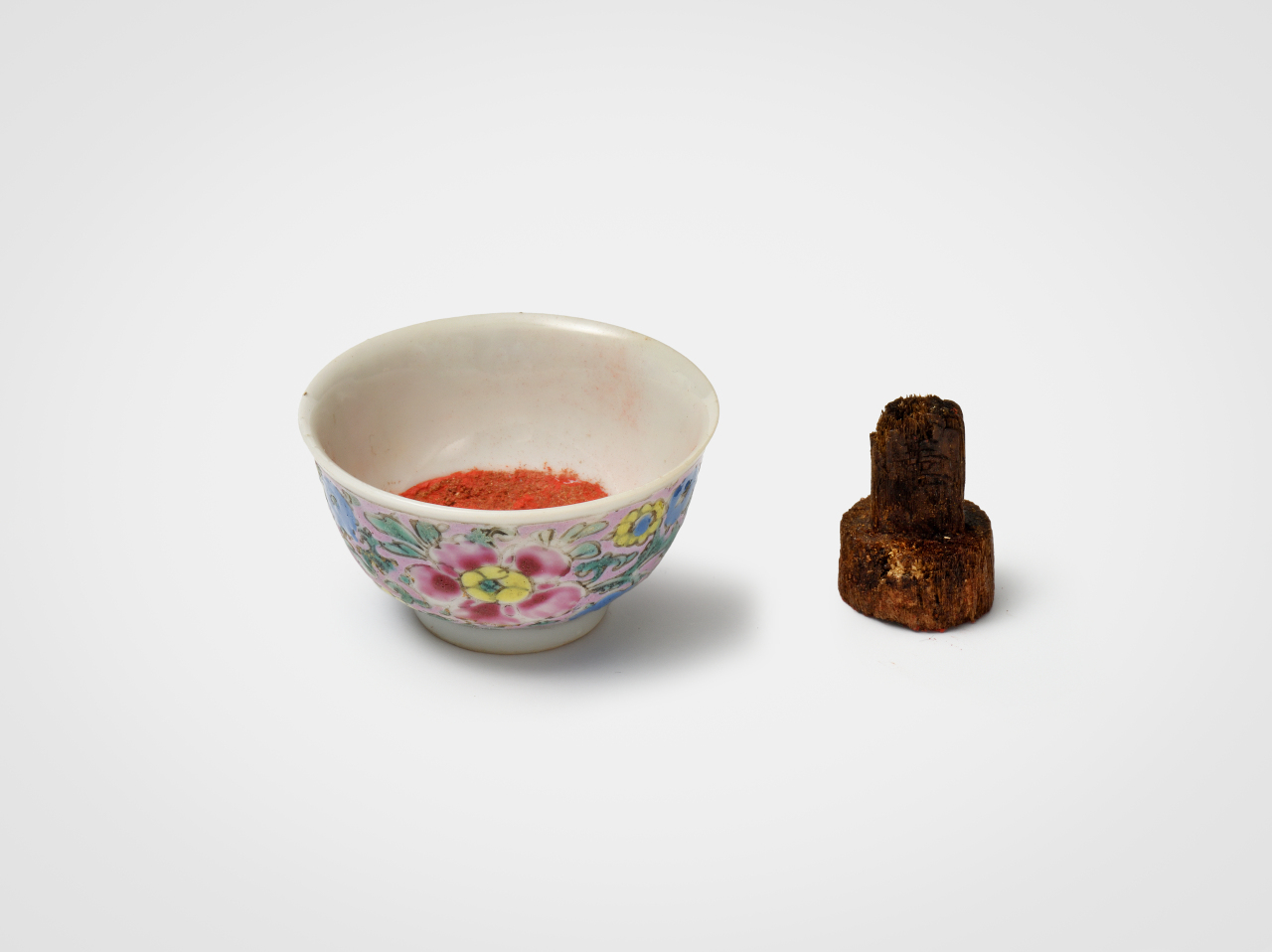18th-century Joseon court makeup offers clues about ‘K-beauty’
By Park YunaPublished : Oct. 22, 2019 - 17:29
An exhibition at the National Palace Museum of Korea shows the style of makeup favored by the Joseon royal family during the 18th century and offers hints at how it may have influenced today’s globally popular “K-beauty.”
The exhibition, titled “Princess Hwahyeop and Her Makeup,” displays relics discovered in a recent excavation of the princess’s tomb, where 12 containers were found with cosmetic substances inside -- along with combs, a bronze mirror and an epitaph from her father, King Yeongjo. Researchers at the museum say it is rare to find containers with cosmetic substances still inside.
Princess Hwahyeop, born in 1733, was the seventh daughter of King Yeongjo, the 21st king of Joseon. She died of measles in 1752 at the age of 20. She and her husband were buried in Sampae-dong, Namyanju, Gyeonggi Province, but both tombs were relocated to nearby Jingeon-eup in the 1970s to free up land for farming.
The owner of the land later discovered a stone case at the former tomb site and excavations were conducted on three separate occasions from 2015 to 2017, according to the National Palace Museum of Korea.
The exhibition, titled “Princess Hwahyeop and Her Makeup,” displays relics discovered in a recent excavation of the princess’s tomb, where 12 containers were found with cosmetic substances inside -- along with combs, a bronze mirror and an epitaph from her father, King Yeongjo. Researchers at the museum say it is rare to find containers with cosmetic substances still inside.
Princess Hwahyeop, born in 1733, was the seventh daughter of King Yeongjo, the 21st king of Joseon. She died of measles in 1752 at the age of 20. She and her husband were buried in Sampae-dong, Namyanju, Gyeonggi Province, but both tombs were relocated to nearby Jingeon-eup in the 1970s to free up land for farming.
The owner of the land later discovered a stone case at the former tomb site and excavations were conducted on three separate occasions from 2015 to 2017, according to the National Palace Museum of Korea.

The substances in the containers included beeswax mixed with other materials to create what appears to be face cream; red powder with cinnabar, used as a blusher; a bottle of vinegar containing ants, presumably used for skin care; and hardened white powder used as a foundation. They also included toxic materials such as lead, which is banned in cosmetics today.
Some analysts say the makeup indicates that the royal family and other women of the Joseon-era upper class considered skin care more important than putting on colors, a trend that continues to this day in the K-beauty industry.
“The bestselling K-beauty products are skin care products, not makeup,” said Lee Min-joon, a researcher at the Academy of Korean Studies. “Looking at the products found during the excavation, you may notice the composition of the cosmetics materials is quite simple and is mostly skin care products.”
She added that because women with dark, silky hair were considered beautiful, the royal family may have focused more on skin care with the goal of achieving flawless skin to set off their hair.
Oh Dae-sik, a professor at Daejeon University’s department of beauty and health management, said due to Confucianism, women in Joseon valued clear complexions and avoided wearing heavy makeup.
“Upper-class women in Joseon used to put on soft makeup. Those who wore heavy makeup were considered courtesans or ‘gisaeng,’” Oh said.
The exhibition runs through Oct. 31 at the National Palace of Museum of Korea.
By Park Yuna (yunapark@heraldcorp.com)








![[Kim Seong-kon] Democracy and the future of South Korea](http://res.heraldm.com/phpwas/restmb_idxmake.php?idx=644&simg=/content/image/2024/04/16/20240416050802_0.jpg&u=)








![[KH Explains] Hyundai's full hybrid edge to pay off amid slow transition to pure EVs](http://res.heraldm.com/phpwas/restmb_idxmake.php?idx=652&simg=/content/image/2024/04/18/20240418050645_0.jpg&u=20240418181020)

![[Today’s K-pop] Zico drops snippet of collaboration with Jennie](http://res.heraldm.com/phpwas/restmb_idxmake.php?idx=642&simg=/content/image/2024/04/18/20240418050702_0.jpg&u=)